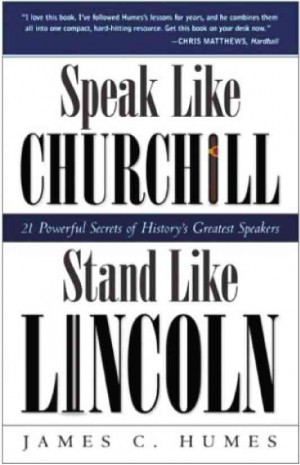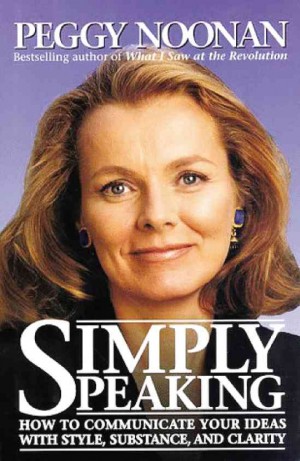Books on Public Speaking
In less than 10 seconds, an executive must convince the folks in the audience that he is not wasting their time. They must decide for themselves that their time is invested well—that they should stay on, listen to this executive, because he has something important, interesting or urgent thing to say—or all of the above.
Public speaking is one of the remaining very public human activities in the 21st century where one person is on the platform, while the rest are seated a few meters from you—or, when televised, the millions scattered around the country—choosing to listen for 10 minutes or so.
“Of all the talents bestowed upon men, none is so precious as the gift of oratory,” said Winston Churchill, one of the famous speakers in the not so distant past, who steeled the determination of the English people against the onslaught of Adolf Hitler’s air force and army.
Churchill has inspired many generations about delivering effective speeches. John Kennedy once remarked of Churchill: “He mobilized English language and sent it into battle.” True enough, the speeches of Churchill, delivered on radio, mobilized the entire military and partisan forces to stop the advance of the menacing Nazi forces. The rest is glorious history of the liberation of Europe.
Yet, business executives will say that Churchill is not their model for their speeches, since their talks are only for business purposes—for informing the work force, rallying them for productivity, or making them close ranks against the marketing offensive of a business competitor.

But many books on public speaking and many speech masters have been saying that, all the more, with information explosion and with so much competition for attention, executives must learn to use public speech to achieve their goals.
Executives are definitely leaders, and it must be known that speaking and leadership are intimately linked.
“It is no secret that leadership gravitates to the person who can present an effective speech,” says Joe Griffith, editor of the “Speaker’s Library of Business.”
“People love leaders who can keep them on the edge of their chairs,” Griffith adds.
Books on speech writing and on delivering speeches have left their own unique voices to the art of public speaking.
Peggy Noonan, speechwriter to former Presidents Ronald Reagan and George Bush Sr., has emphasized the extreme value of substance, when she pointed out: “The most moving thing in a speech is its logic.”
In her book, “Simply Speaking,” Noonan has gone further to stress that point deeper: “Without policy, the speech will perish.” In that book, Noonan compared the inaugural speeches of former Presidents John F. Kennedy and Bill Clinton—and bluntly said that Kennedy’s piece was loaded with “policy,” while Cinton’s rhetorical piece was bereft of any policy statement.
David Humes, the mentor of many speechwriters in America, has dished out great one-liners: “Terse is better than tedious” … “incisive sounds decisive” … “short is sharper”… and “tell a story, not a speech.” Humes is author of “Speak Like Churchill, Stand Like Lincoln.”
It is Humes who spent an entire chapter, “Power Pause.” In here, he advises speakers, even when they are already at the podium to have a “pregnant pause,” a one minute of silence. “It is one way to grab attention, he says. Silence, in the midst of voice, noise or music has a way of getting one’s attention.
One tip I learned from an event organizer is this: “When you are about the speak, suddenly stop the music—and the audience will expectedly be stunned and they will instantly be quiet.” Part of delivering speeches is knowing crowd control—aside from “working the room.”

Public speakers and speech writers agree on one thing: You should master the art of narrative in public speaking. Gone are the days when the speech is delivered like an entire expository piece—reasonably argued, connected by analyses, or an extensive persuasive essay.
Story telling is now the key. Humes says so. The authors of “Pin Drop Principle” recommend it like an indispensable mantra. In fact, the authors of the Pin Drop Principle book recommend a structure that follow a plot of a drama or a short story—Exposition, Inciting Incident, Rising Action, Climax, Falling Action and Resolution.
And how does one begin and end a speech? “Great is the art of beginning, but greater is the art of ending,” quips Humes. In the Library of Speeches, there are openers that have proven very effective. Making an ending should be in the written speech. It is the best antidote to a speech that is over extended because the speaker usually continues to speak—looking for a suitable chance to end the ordeal.
And so this review ends—with this point: public speaking will remain a major activity of a leader. It will not take a backseat.
More than ever, the voice—and image—of that man or woman on the podium must be heard and seen in order to inspire a people to move with resolve for a desired step or a cause.
Be they in the political realm, in posh board rooms or in august halls of multinationals. dmv.communications@gm
